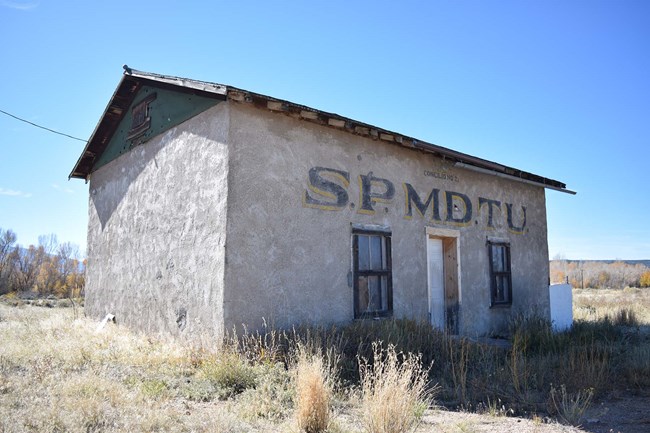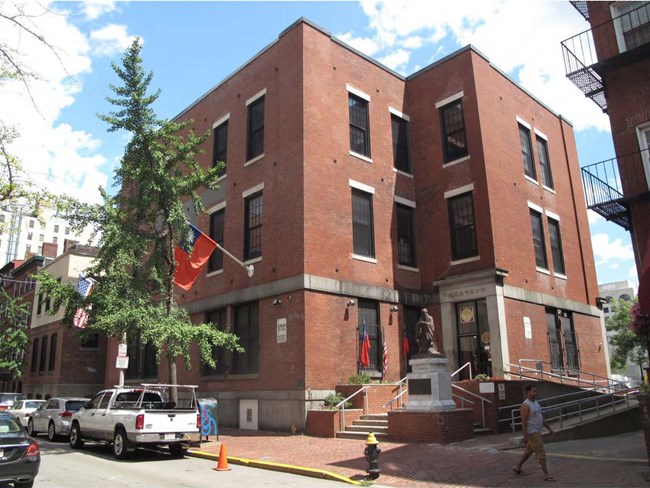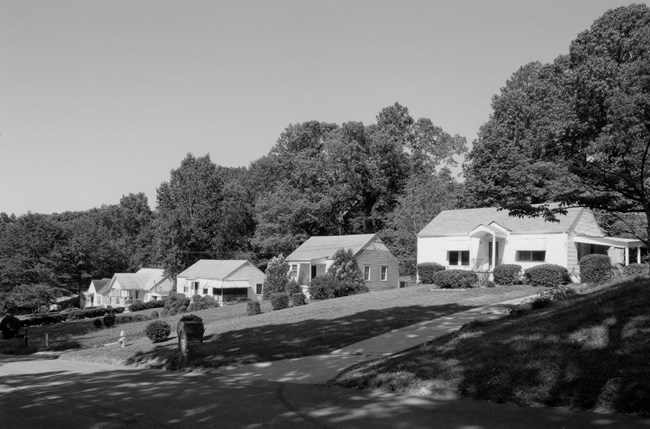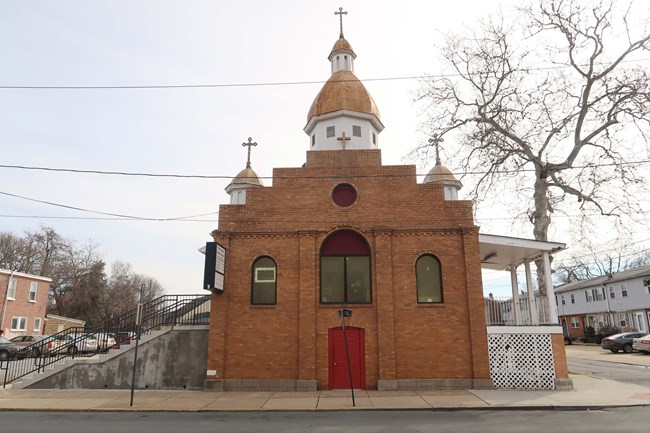
Photograph by Thomas H. Simmons, courtesy of Colorado State Historic Preservation Office
Colorado, Reference number: 100003273
Area of Significance: Archeology-Historic, Architecture, Ethnic Heritage: Hispanic, Social History
Period of Significance: 1920-1968
Locally significant for its architecture as an intact example of a SPMDTU lodge hall, or sala, dating to the 1920s, the Chama lodge served the fraternal and social needs of the local Hispanic community. Hispanos formed mutual aid societies to combat prejudice and exploitation, to educate their members about the laws and institutions of the United States, to welcome new arrivals to the communities, and to plead cases of injustice before the appropriate authorities. The society provided such benefits as life, sickness, and burial insurance to its members. It also played an important social role in the community, particularly through dances that were open to all residents of the vicinity.
Link to file

Photograph by Neil Larson, courtesy of Massachusetts State Historic Preservation Office
Massachusetts, Reference number: 100001458
Area of Significance: Ethnic Heritage: Asian American, Education, Social History, Architecture
Period of Significance: 1848-1976
The Quincy Grammar School was nominated as a very rare example of a public school closely associated with the Chinese and Chinese-American community. Truncated to three (from four) stories after a hurricane damaged its roof, the Quincy Grammar School achieved its existing external appearance in 1938, within its period of significance.
Link to file

Photograph by James R. Lockhart, courtesy Georgia State Historic Preservation Office
Georgia, Reference number: 09000457
National level of significance
Area of Significance: Ethnic Heritage: Black, Social History, Community Planning and Development, Architecture
Period of Significance: c. 1915-1979
Collier Heights is the foremost mid-20th century African American suburb in Atlanta and the premier example of a mid-20th century suburb created for and by African Americans in the country. Its preeminence derives from its unique combination of sheer size, the number and range of its single-family homes, the quality of its planning, design, construction, and landscaping, its association with and the prominent role played by African Americans in all aspects of its development during a time of strict housing segregation in the South and nationally.
Link to file

Photograph courtesy of Delaware State Historic Preservation Office
Delaware, Reference number: 100006071
Areas of Significance: Social History, Ethnic Heritage: European/Ukrainian, Ethnic Heritage: Black, Exploration/Settlement, Architecture
Period of Significance: 1909-1970
This nomination documents a community-led preservation effort for a former Ukrainian community church, St. Nicholas Ukrainian Catholic Church, now New Calvary Baptist Church. The complex history of this property tells both the story of Ukrainian immigration to Wilmington, Delaware, at the turn of the 20th century and the experience of an African American congregation in Wilmington after the failed urban renewal efforts. The building reflects the ethnicity and Eastern rite religion of the group that built it, as well as specific adaptations that reflect the building’s current Baptist era.
Link to file

Alabama, Reference number: 100007119 – restricted,
Areas of Significance: Maritime History, Archeology/Historic, and Ethnic Heritage: Black.
Period of Significance: 1855-1860.
Clotilda is listed under Criteria A and D, at the national level of significance, and is known to have transported 110 African captives purchased on the west coast of what is now Benin to Alabama in violation of federal legislation outlawing the importation of slaves. On July 9, 1860, Clotilda’s captain and builder scuttled and burned the schooner to avoid seizure and examination by federal officials. The vessel is nationally significant for its association with the last known slave trading voyage that brought captives to the United States and the only archeologically recovered example of an American slave trading vessel lost in the transatlantic slave trade whose remains have been located and positively identified. Clotilda assumes additional significance when understood in tandem with the post-Civil War founding of Africatown (itself a nationally significant historic district listed in the National Register) by some of the very individuals who had been forcibly held captive aboard Clotilda. (See Section 8, pp. 40-41 for sample research questions.)
Link to file
Last updated: December 20, 2023
